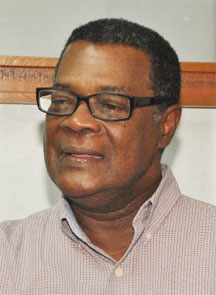Mercury-free mining is already becoming a reality in Guyana: the screening plant being used by Mulgravian Ventures Guyana Incorporated was showcased in mid February, but for the small to medium-scale miner with minimal manpower, the transition will be more difficult.
The Guyana Geology and Mines Commission (GGMC) said it will help to facilitate the process by exposing these miners to suitable alternative methods. GGMC Commissioner Rickford Vieira noted that the implementation of appropriate technology was critical to encourage growth in the sector and keep it competitive globally. He stated that mercury-free mining “has to be profitable, easy and efficient”.

The commissioner continued that reduction techniques could easily be improved in the interior and the GGMC, along with the Guyana Gold and Diamond Miners Association (GGDMA), was committed to fostering change in the small and medium-scale miners’ extraction techniques.
One of the newer technologies on the market is the ‘cyanidation’ method. Vieira stated that the yields are incredibly high, as much as 90 per cent and more. He said that while the yield is incredibly high, the process is complex and expensive and requires charcoal which could be an issue for small-scale miners.
Small versions of the cyanidation machinery are currently being utilised in South Africa, along with larger units. Vieira noted that Guyana is not prepared to invest in the smaller units because more testing is required. He said those mercury-free technologies will be utilised, but miners had to take a vested interest in reduction. He stated that many times when he visited sites, it was clear that miners were getting lesser yields, because the sluice box water flow is not smooth. He also said small and medium-scale miners with access to centrifuge technology had to know how to calibrate the machines.
Exploring more new methods
He pointed out, that mercury-free techniques such as the chlorination process, which results in saltwater as a by-product and exploratory gold amalgamation, were methods that would be further explored.
GGMDA President Patrick Harding stated that moving away from the use of mercury will be difficult and that illegal mining will pose a detriment.
He said although the global push to reduce mercury contamination was environmentally sound, mercury will always be prevalent, “because somebody will sell you something, illegal or legal… but we need to move away from it because of the environment”.




